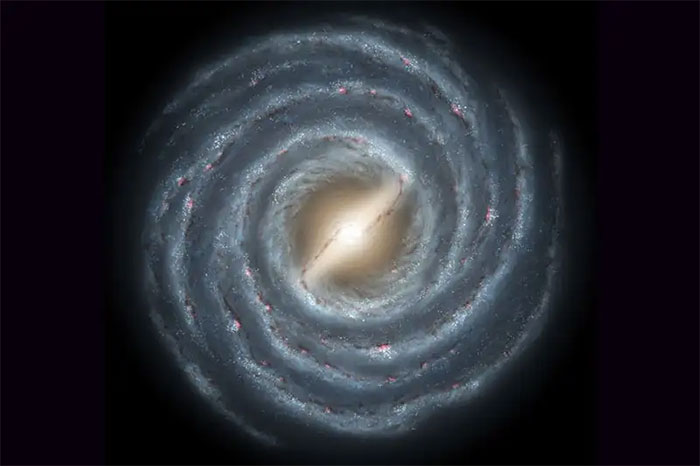The Milky Way has a mass of 890 billion times the Sun
Based on gravity and the movement of objects, scientists calculate the enormous mass of the Milky Way.

The Milky Way is spiral in shape, hundreds of billions times the mass of the Sun.(Photo: Fox News).
Calculating the mass of the Milky Way is challenging because this is where people live, Live Science on 12/12 reported. Researchers often "weigh" the galaxy by tracking the movements of the inner stars , thereby determining how the galactic gravity affects the star. Humans can use the telescope to view the entire Andromeda galaxy, but not much of the Milky Way.
Stars near the Earth and dust obscure distant stars. Therefore, the researchers must use more complex technical and statistical measures to infer how the Milky Way works, what it looks like when viewed from the outside. Within the Milky Way, the orbits of the solar system are also uneven, causing researchers to adjust the data.
Based on how gas, stars and matter travel in different regions of the Milky Way, the team could calculate the true mass of the galaxy."The disk surface of the Milky Way is rotating but is irregular. Objects that are at different speeds from the center of the galaxy move around that center at different speeds," said Fabio Iocco, co-author of the study, a physicist. astronomy at Imperial College London, explained.
This rotational force must be proportional to the gravity of the Milky Way galaxy at each point on the galaxy's disk. Otherwise, the galaxy will tear itself apart, the stars and nebulae will splash out into the empty space between galaxies.
The Milky Way not only contains stars, gases and visible objects, but also dark matter. Although not directly visible, dark matter makes up the bulk of the Milky Way. This is the same for most other galaxies. In this case, the mass of dark matter is equivalent to 830 billion times the Sun, which is about 93% of the mass of the Milky Way.
- The mass of the Milky Way
- The Milky Way has a mass of 700 billion times the Sun.
- Decipher the mysterious fog in the Milky Way
- The supernova is 20 times brighter than the Milky Way
- Fun little-known facts about the Milky Way
- The galaxy glows brightly when it produces 4,500 times more stars than the Milky Way
- The Milky Way has billions of planets close to Earth
- 100 billion planets reside in the Milky Way
- Detecting the minimum mass of the galaxy
- Enjoy the pure Milky Way season
- The galaxy cluster is 500 billion billion times heavier than the Sun.
- The mysterious age of the mysterious star
 Van Allen's belt and evidence that the Apollo 11 mission to the Moon was myth
Van Allen's belt and evidence that the Apollo 11 mission to the Moon was myth The levels of civilization in the universe (Kardashev scale)
The levels of civilization in the universe (Kardashev scale) Today Mars, the sun and the Earth are aligned
Today Mars, the sun and the Earth are aligned The Amazon owner announced a secret plan to build a space base for thousands of people
The Amazon owner announced a secret plan to build a space base for thousands of people